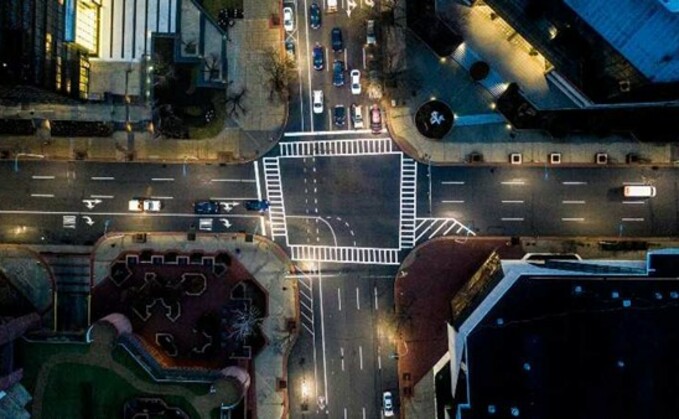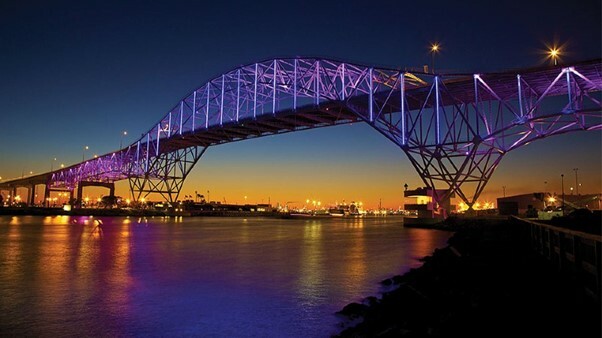
Industry Voice: To make your city smart, why not utilise the city-wide network you already possess, asks Signify
The race to connect and digitise cities through smart lighting has begun.
It is a welcoming sign for these bustling metropolises, which together account for 70 per cent of all global CO2 emissions, and perhaps indicates just the beginning of the smart city revolution.
While lighting is just one of the many components of a much larger ecosystem, Signify contends that it can and should be used as the entry point into becoming, and ultimately being the backbone of, a truly digital city.
"Smart connected lighting goes far beyond that of illumination and should certainly be considered by municipal councils and urban planners," said Harry Verhaar, Signify's head of global public and government Affairs.
"Street lighting remains an undervalued resource, particularly when it comes to the digital realm," he added. "We have proven results that show connected lighting systems offer improved quality of life through the additional features they bring, as well of course the reduced energy consumption and lower running fees that come with switching to smart LEDs. This environmentally friendly and digital resource needs to feature firmly in national and municipal post-pandemic recovery strategies."
The company is now encouraging Europe to lead the way and embrace the lighting-led digital transformation. This will be needed so that the built environment aligns well with a bigger shift towards a future largely revolving around digitisation.
Interact City for example, Signify's highly secure connected LED lighting management system can remotely control and monitor a city's worth of individual light points and streetlight cabinets through a single centralised online application. Perhaps the most advantageous component, however, is how the system, when integrated with innovative lighting fixtures and poles like the BrightSites Smartpole, advances digital opportunities and the ‘Internet of Things' (IoT) network.
These streetlamps have the potential to house 5G and Wi-Fi connectivity, remote-controlled billboards, CCTV, and microphones capable of detecting sudden loud noises which can be quickly investigated. Nodes and sensors can provide data-based insight into electricity usage, noise pollution, as well as traffic. The light's brightness can also be controlled to adapt to nearby activity.
A study by Signify and the World Council on City Data found that achieving the right street lighting level helps to reduce traffic accidents, deters crime, fosters community identity, encourages crowds to disperse and helps people to feel safer on their streets. Interestingly, night-time traffic accounts for 25 per cent of traffic volume but 40 per cent of all accidents. The addition of good quality lighting can help to reduce accidents involving personal injuries by up to 30 per cent.
And for the balance sheets of local municipalities, using Interact City makes a lot of sense. Infrastructure needs only to be revamped, rather than renewed, running and maintenance costs are lowered, and additional income can be gained through monetising and renting out the pole's housing to telecommunication companies or those looking to advertise on the fixture's billboard.
A smart node on a city-wide network that you already have in place and which you can connect wirelessly"
"The streetlight has come of age. Think of it providing quality light but also as a digital node with its own IP address on a network that extends to every road and street in your city. A smart node on a city-wide network that you already have in place and which you can connect wirelessly," said Verhaar.
Smart move
In 2020, the New York Power Authority partnered with Signify in support of Smart Street Lighting NY, an energy efficiency initiative launched two years prior by the state's then-Governor Andrew Cuomo. To date, over 50,000 LED streetlamps have been installed and connected to the Interact City system, demonstrating the importance of light in the digital revolution.
"Urbanisation, digitalisation and sustainability continue to drive key actions associated with smart city engagement," said Martin Stephenson, head of Signify's North America Systems and Services, who argued that the benefits of connected lighting go "far beyond pure illumination".
"Through NYPA and Signify's shared vision, communities can improve light quality, generate significant energy savings, and improve citizen safety and wellbeing using leading-edge technologies," he added.

City landmarks can also benefit from a smart city makeover. Even the most drab monuments can be completely transformed by subtle colourful light - displays that can be customised to special events and holidays by the swipe of a screen app. What's more, the benefits to local communities can be profound. Inner city areas can be regenerated, and cities become more liveable and attractive to tourists.
Local economies stand to benefit. Light shows played out across the span of the Corpus Christi Harbor Bridge in Texas have revitalised the coffers of local businesses. Motels facing the bridge sell out on a regular basis, and to dine at many of the restaurants overlooking you must reserve a table at least a month in advance. The light shows, which change regularly, have turned the 1950s steel truss bridge into a beacon for regeneration and a source of civic pride for the locals.
Signify's latest system for controlling architectural lighting, is Interact Landmark. The software suite enables lighting managers to change light scenes on the fly and do so wherever there is a secure internet connection. There is even an app that allows people with smart phones to interact directly with the lighting on the landmark, creating a truly memorable and interactive experience.
Built environments - roads, streets, facades - need to be fit for purpose for the digital age. Smart cities, once dreamed about are rapidly becoming reality with lighting networks coming to the fore as a vehicle for reducing electricity consumption while delivering smart city services. As policy makers sharpen their post-pandemic recovery plans, now is the perfect time for lighting to have a seat at the top table.
This article is sponsored by Signify.








